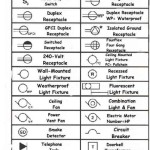Essential Aspects of Insulated Dog House Plans
Providing your furry friend with a comfortable and secure shelter during the colder months is essential for their well-being. An insulated dog house offers insulation from extreme temperatures, ensuring a warm and cozy retreat for your pet. When designing or selecting insulated dog house plans, consider the following essential aspects to ensure your dog's comfort and safety:
1. Size and Ventilation: The dog house should be large enough to allow your dog to comfortably stand, turn around, and stretch. Adequate ventilation is crucial to prevent moisture buildup and ensure fresh air circulation. Provide proper ventilation openings, but avoid placing them opposite each other to prevent drafts.
2. Insulation Materials: Choose insulation materials designed for outdoor use and moisture resistance. Common options include rigid foam boards, fiberglass batts, or spray foam insulation. Ensure the insulation is properly installed to minimize heat loss and create a draft-free environment.
3. Weather Resistance: The dog house exterior should be constructed from weather-resistant materials such as treated wood, vinyl, or composite panels. Consider a sloped roof to prevent water accumulation and a protective overhang to shelter the entrance from rain and snow.
4. Elevated Floor: Elevate the dog house floor to protect your pet from ground moisture and cold. Use materials like pressure-treated wood or concrete blocks and provide insulation underneath to prevent drafts and heat loss.
5. Insulated Walls: Insulated walls are essential to prevent heat loss and maintain a warm interior. Choose materials with high insulation values and properly seal all gaps and joints to minimize air leakage.
6. Insulated Roof: The roof plays a crucial role in insulation and protecting against heat loss. Use insulated roofing material and seal the edges to prevent drafts. Consider an attic space above the ceiling for additional insulation.
7. Entrance Design: The entrance should be large enough to allow your dog to enter and exit comfortably. Position the entrance away from prevailing winds and consider adding a flap or curtain for extra insulation and protection against drafts.
8. Heating Element: In extremely cold climates, you may want to consider adding a heating element to the dog house. Choose a safe and low-wattage heating pad or heater designed for outdoor use. Ensure proper insulation around the heating element to prevent heat loss.
9. Maintenance and Cleaning: Insulated dog houses require regular maintenance to ensure their effectiveness. Clean the house regularly to remove dirt and debris. Inspect the insulation for damage or moisture and replace it as needed. Seal any gaps or cracks in the exterior to maintain insulation.
By considering these essential aspects in your insulated dog house plans, you can create a comfortable, safe, and warm shelter for your furry companion during the colder months.

Cold Weather Dog House Plans Bradshomefurnishings Winter Diy Insulated

Insulated Dog House Plans Myoutdoorplans

How To Build A Diy Insulated Dog House Wilker Do S

Dog House Plans Here Is Kanna Waiting For Her New Too Bad This One Isnt Houses Insulated

How To Build A Custom Insulated Dog House Ron Hazelton

Insulated Dog House Diy Plans

How To Build An Insulated Or Heated Doghouse 10 Steps

How To Build A Diy Insulated Dog House Wilker Do S

How To Build An Insulated Dog House Howtospecialist Step By Diy Plans

Best 25 Insulated Dog Houses Ideas Only On House Diy Plans








